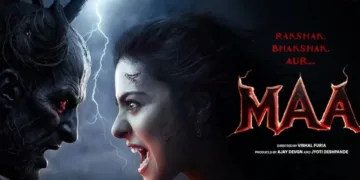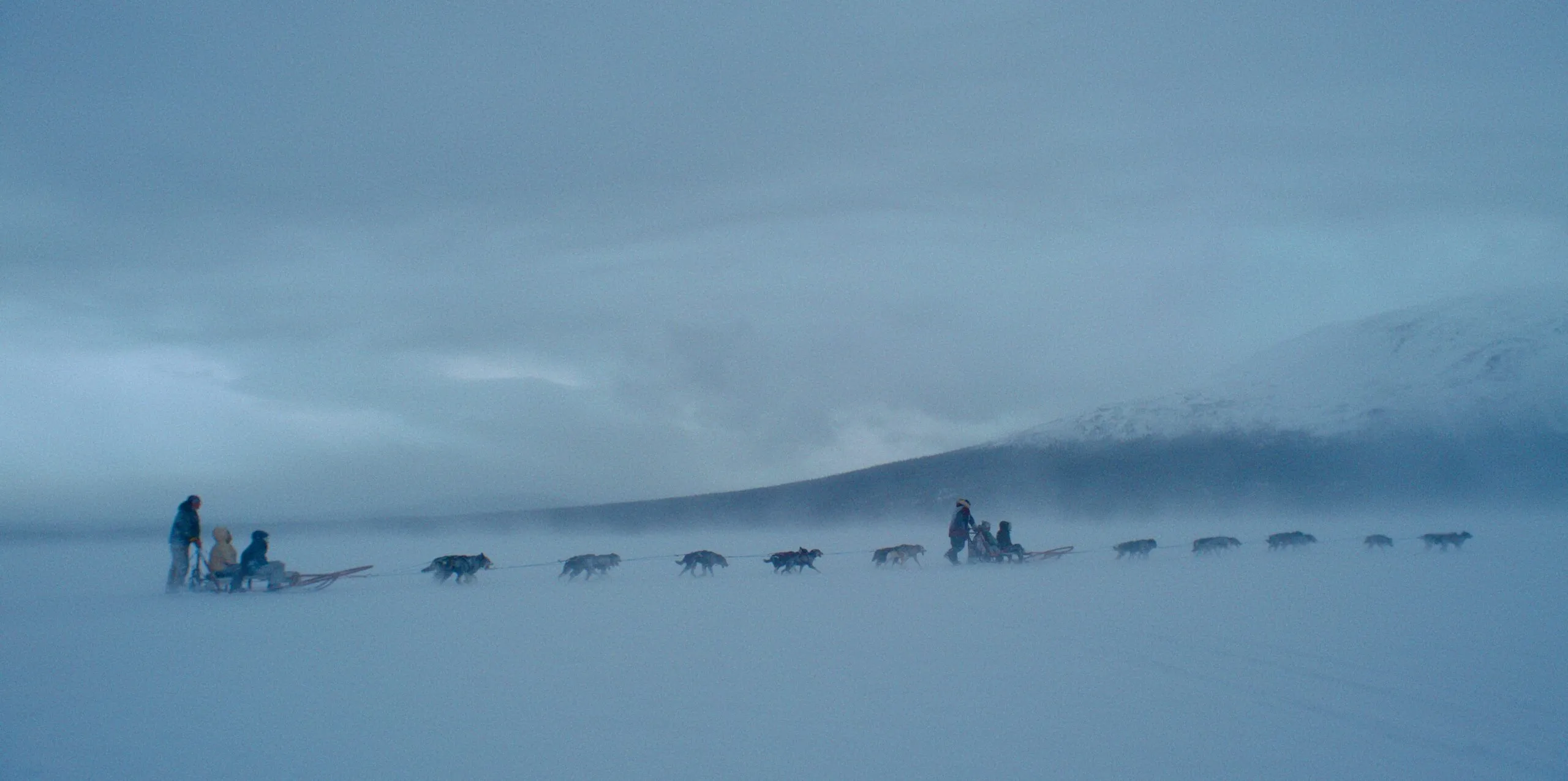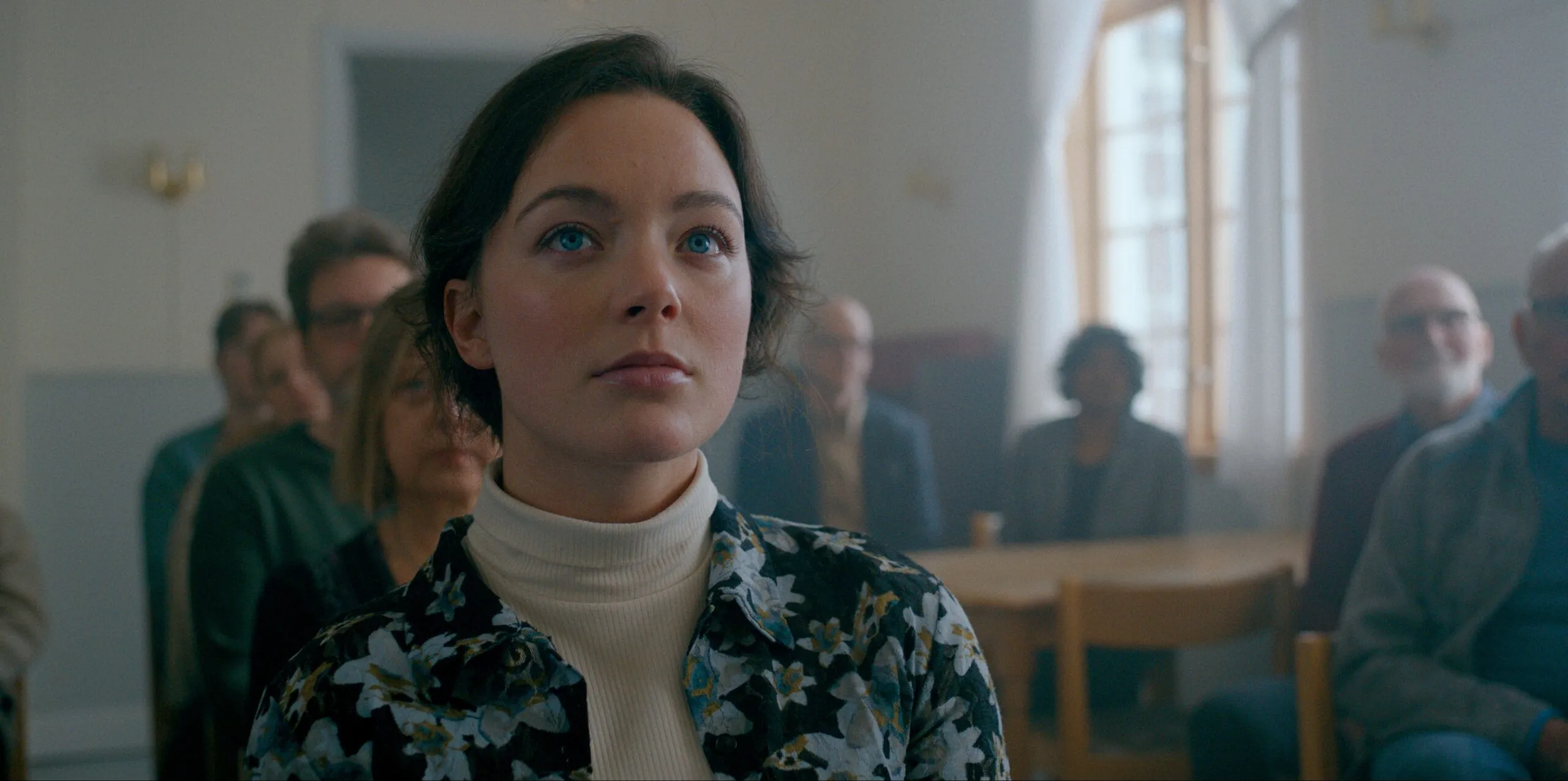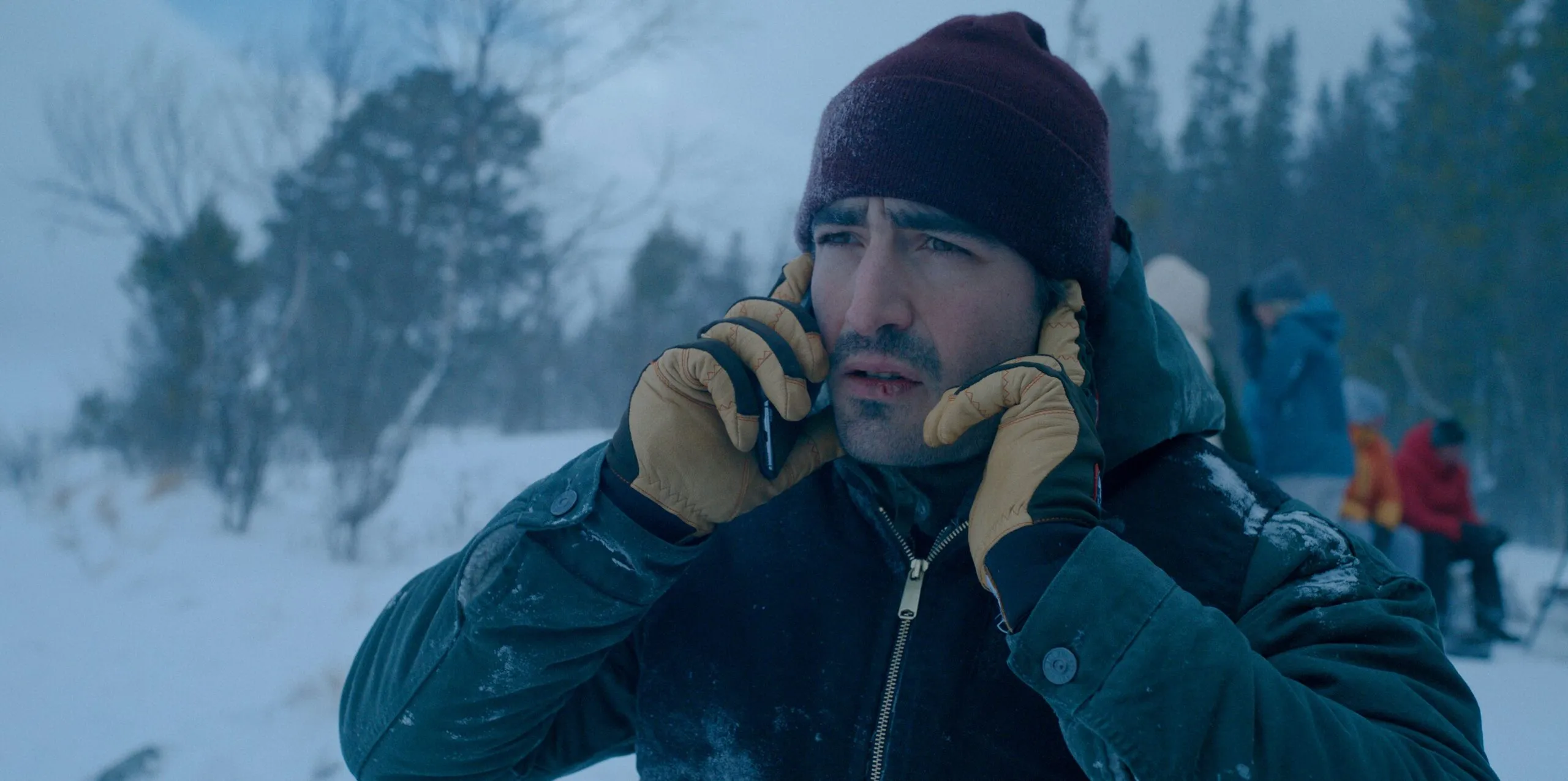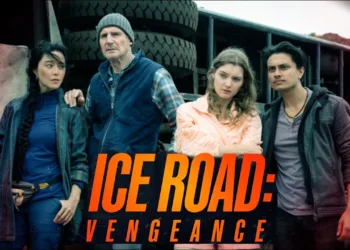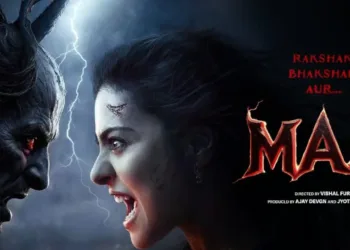The Åre Murders Season 1 appears as a Nordic noir crime thriller on Netflix, adapted from the works of Swedish novelist Viveca Sten. Drawing from the narratives of “Hidden in Snow” and “Hidden in the Shadows,” the series introduces two investigations that uncover personal failings and communal secrets in a society under strain. This dual-case framework prompts viewers to reflect on the interplay between individual missteps and collective responsibility.
Set against the wintry backdrop of Åre—a town celebrated for its ski resorts, snowy peaks, and a glistening lake—the series uses the cold season to instill a mood that is both stark and thought-provoking.
Winter celebrations, including the Lucia observances, cast a subtle irony over the festive air as dark themes quietly emerge. The contrast between the holiday spirit and the series’ grim subject matter hints at a cultural commentary on the contradictions present in modern life.
Structured as a limited series with a concise episode count divided into two parts, the narrative maintains a brisk pace while preserving essential plot details. This approach reflects current shifts in streaming content, where tightly structured series capture attention quickly and encourage a new mode of engagement. Casting choices and production decisions also spark discussion on modern representation and the reflection of societal norms in today’s media.
Examining the Story Arc and Narrative Flow
The narrative centers on Hanna Ahlander, a Stockholm detective seeking respite in Åre. Her attempt to leave behind a troubled past soon collides with a disturbing incident when a teenage girl vanishes, forcing her into a complex investigation. The initial disappearance sets off a chain of events that rapidly transitions into a murder inquiry, with hidden secrets gradually emerging from the quiet corners of the town.
The series divides its storyline into two distinct segments. Early episodes focus on the investigation into the girl’s disappearance and subsequent murder, crafting a mood of unease and suspicion. A few episodes later, the narrative shifts to a new case signaled by the discovery of another body, which introduces fresh characters and adds unexpected complications. This method of splitting the story permits a focused examination of crime and its impact on a close-knit community while keeping the narrative brisk and direct.
The quick succession of events mirrors the consumption habits favored on streaming platforms. A rapid sequence of developments keeps the tension constant and viewers engaged, though the hurried rhythm occasionally renders some elements less fully explored. Sudden plot twists spur the investigation forward, generating moments that prompt reflection on the effects of isolation and the weight of hidden truths in a small town.
This narrative approach resonates with contemporary shifts in storytelling—one that speaks to an emerging demand for content addressing social disparities and elevating underrepresented perspectives in clear, immediate terms. The structure, with its distinct cases and fast pace, stands as an example of how modern production methods reshape the portrayal of intricate mysteries, influencing both the craft of storytelling and the cultural conversation sparked by today’s media.
Interpersonal Portraits in Åre
The characters in The Åre Murders serve as a mirror for evolving societal debates. Hanna Ahlander, a Stockholm officer with a background in domestic violence, confronts personal heartbreak and professional disarray.
Her move to Åre signifies an attempt at renewal, yet her deep-seated commitment to uncovering the truth proves irresistible. Her internal struggle—balancing the desire for respite against the pull of duty—mirrors ongoing discussions about personal agency and the challenges of finding support amid systemic pressures.
Daniel Lindskog appears as a stalwart of local law enforcement whose methods have long been ingrained in community practice. His initial hesitance to collaborate with Hanna shifts over time into a dynamic marked by both cooperation and persistent friction. This gradual transformation of their professional relationship captures the encounter between established routines and emerging perspectives, raising questions about adaptability and the infusion of fresh insights into traditional roles.
Supporting figures such as Harald, Lena, and Ebba, whose personal dramas interlace with the central mystery, further enrich the storyline. The ambiguous presence of Viktor injects additional complexity into the investigation. Each of these roles contributes to an atmosphere thick with suspicion, where secrets lurk beneath the surface of everyday interactions. This ensemble advances the narrative while inviting viewers to consider themes of trust, betrayal, and the impact of concealed truths on communal well-being.
The interplay between Hanna and Daniel spotlights how individual vulnerabilities can intersect with professional challenges. Their exchanges, marked by moments of reluctant alliance and intermittent discord, spark conversation about modern gender roles and the shifting balance of power in workplace settings. Every character portrayal offers insight into identity and cultural expectations, reflecting broader shifts in how society confronts and redefines its norms.
Themes, Tone, and Atmosphere
The Åre Murders presents a dark narrative that rests comfortably within the Nordic noir tradition. Its storytelling embraces moral complexity and intricate investigations, where the wintry setting is far more than a mere backdrop.
The relentless cold and expansive snowy vistas of Åre contribute to an environment filled with quiet dread and unspoken truths. This isolation accentuates the series’ focus on secrets that seep into every corner of the town.
Characters and settings combine to build a world where personal histories collide with a broader sense of unease. The narrative offers repeated encounters with concealed pasts, as the residents hide layers of regret and guilt. In this town, trust proves elusive; betrayals, both overt and hidden, shape the fabric of everyday life.
Hanna’s inner conflicts—her struggle to find balance after personal and professional setbacks—mirror the broader issues of disempowerment and the weight of social expectations. The series hints at serious societal issues, using background threads related to exploitation and coercion to enrich its story without overwhelming the central mystery.
The atmosphere oscillates between moments of deceptive calm and bursts of urgent tension. Gentle scenes of quiet reflection, where characters pause in the muted light of a winter day, are soon interrupted by sudden discoveries that unsettle the fragile peace. The interplay of dim lighting, shadowy corners, and the stark winter landscape creates a setting that feels both oppressive and meticulously crafted.
This environment challenges traditional approaches to storytelling, as the visual cues and measured pacing invite viewers to question the stability of their own surroundings. The Åre Murders, by relying on visual and narrative contrasts, prompts a reassessment of how modern mysteries can serve as mirrors for the complexities and hidden struggles within our society.
Behind the Lens and Adaptation Choices
Directors Joakim Eliasson and Alain Darborg, together with scriptwriters Karin Gidfors and Jimmy Lindgren, bring a wealth of experience from prior crime and thriller projects. Their combined vision crafts a narrative that relies on precise exposition balanced against moments of sudden suspense.
The task of transforming dense material from Viveca Sten’s novels into a limited series format demanded discipline and clarity, resulting in a script that speaks directly to audiences accustomed to fast-moving content on streaming services.
The series employs location shots that capture Swedish mountains and the icy expanses of Åre with skill. Careful framing and subtle lighting work in tandem to evoke the cold, desolate environment, while a muted color palette contributes to the pervasive sense of isolation. These visual choices work together to support a tone that is as measured as it is menacing, reflecting the hidden layers of a community steeped in secrets.
Adapting a substantial literary work into episodic content required a refined approach to storytelling. The narrative is split into two distinct investigations, ensuring that each case receives dedicated focus without sacrificing overall coherence. By condensing expansive narratives into a compact format, the series demonstrates an ability to retain complexity without overwhelming its viewers—a challenge met with thoughtful editing and pacing.
The structure of the episodes encourages a continuous viewing experience, relying on well-placed cliffhangers and rapid transitions that keep the audience engaged throughout. Technical decisions in editing and sound design help maintain a steady rhythm as the narrative shifts between the two cases.
This format appears to set a precedent for future projects, suggesting that traditional mystery elements can be reimagined for a new era of on-demand television, where each technical choice contributes to a seamless and absorbing storytelling experience.
Final Impact and Reflections
The series showcases a mix of personal drama, intricate mystery, and atmospheric visuals that define its Nordic noir roots. Its two-part narrative, featuring twin investigations, sustains a rapid pace that holds viewers in constant anticipation. This format dissects both the intimate struggles of its characters and the collective secrets simmering beneath a seemingly serene town.
Designed for a streaming audience, each episode ends with unexpected turns that compel immediate viewing of the next installment. Technical choices—ranging from precise direction to evocative cinematography—lend a tangible tension to the unfolding narrative, ensuring that the pace never lags and that every moment feels charged with possibility.
The series contributes meaningfully to current shifts in television storytelling. Its treatment of themes such as distrust, personal cost, and communal vulnerability mirrors debates around representation and social responsibility in modern media.
While some narrative threads remain open, the show crafts a memorable experience that questions traditional storytelling and gestures toward fresh ways of engaging viewers on-demand. Production decisions subtly acknowledge the evolving cultural landscape, hinting at how future crime dramas may evolve to reflect the complexities of today’s societal dialogues.
The Review
The Åre Murders Season 1
Featuring stark visuals, intricate plots, and genuine character struggles, The Åre Murders Season 1 stands as a noteworthy entry in the Nordic noir canon. Its dual-case narrative and fast-moving storyline grip viewers with a sense of relentless urgency. The series employs its isolated setting to mirror societal tensions and personal dilemmas, sparking conversation on contemporary social issues. Designed for the streaming era, it reflects shifting audience habits and expectations.
PROS
- Atmospheric and visually striking production
- Engaging dual-case narrative that sustains suspense
- Strong character dynamics and evolving relationships
- Designed for a binge-watching experience with cliffhanger endings
CONS
- Some narrative threads remain unresolved
- Occasional pacing issues that may feel rushed
- Limited exploration of certain supporting characters



























